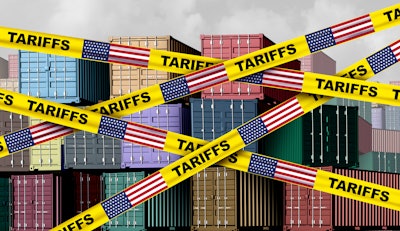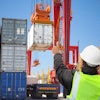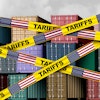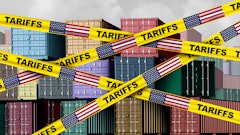
Evidence of a manufacturing slowdown has risen in recent months. In fact, the Institute of Supply Management's Purchasing Managers' Index entered contractionary territory and Bank of America small business account data suggests deposit volume growth has slowed, though it remains positive at 2.6% year-over-year (YoY) in May.
Could reshoring revive part of the sector if tariffs make it more cost-effective? Half of respondents to a BofA Global Research proprietary survey expect industrials/manufacturing to record the greatest shift to the United States relative to other sectors over the shortest horizon (within a year).
But many factors could limit this shift.
Key takeaways:
· Tariffs could mean lower margins. Bank of America small business account data shows profitability for small manufacturing firms lags other industries and fell 2.1% YoY in May. Plus, a lack of qualified labor and high labor costs might accelerate automation, improving productivity but not necessarily employment.
· Evidence of a slowdown in the manufacturing sector is mounting. According to the US Census Bureau, new orders for manufactured durable goods decreased 6.3% in April, following four consecutive monthly increases. Additionally, the Institute of Supply Management (ISM) Manufacturing Purchasing Managers’ Index (PMI) has been below 50 since March, signaling a contraction. And. according to Bank of America internal data, while deposit volume per small business client remains positive in May at 2.6% growth year-over-year (YoY), but the rate of growth has come down over the past several months.
· According to BofA Global Research, many U.S. companies have been reshoring since 2019 after the first Trump trade war and the pandemic exposed supply chain issues.
· Most respondents who expected production to shift to the United States from elsewhere thought this would happen within the next three years, with the expectation that production would shift out of China over a similar timeframe. Respondents also expected industrials/manufacturing would exhibit the greatest degree of movement toward the United States and over the shortest time horizon. Aided by reshoring, U.S. industrial firms are building new plants at a rapid pace.
· On an inflation-adjusted basis, construction on manufacturing plants grew 24% YoY in 2022, 45% YoY in 2023, and 21% YoY in 2024 to $234 billion. This construction leads to spending on production machinery as well as hiring and is roughly double average real spending of $117 billion (2016-20), according to the US Census Bureau.
· While BofA Global Research’s survey suggests that tariffs could continue to drive reshoring of production, this is not without costs. Nearly 80% of respondents expect the companies they cover to pass on the cost of higher tariffs to consumers to some degree. Most also expect some of the tariff impact to fall on the producer, putting downward pressure on margins. And Bank of America small business account data shows profitability for small manufacturing firms lags other industries and fell 2.1% YoY in May. Most respondents expect companies to pass on the costs of higher tariffs to a degree.



















